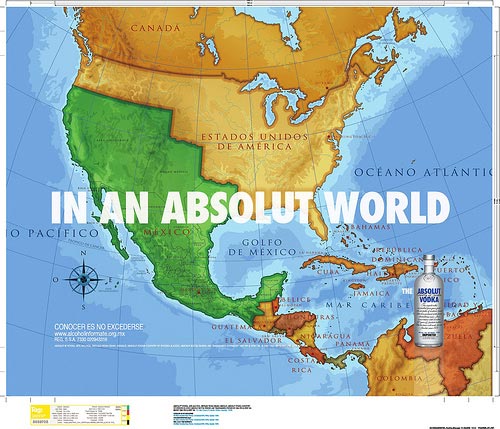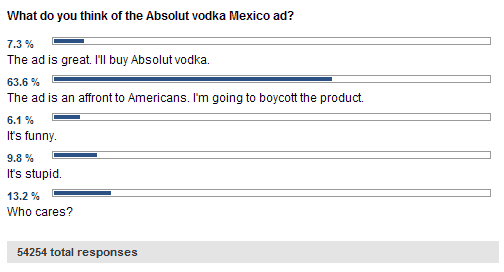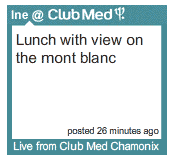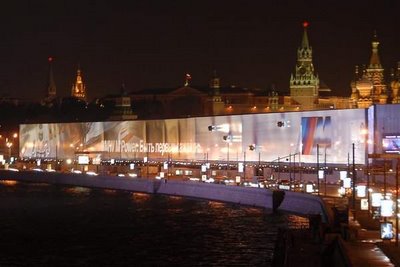10 days ago, i was in Ghent for the festival The Game is Up! at the Vooruit. Artists who study the relationship between art and consumerism were invited to perform, and present their work to explore this year’s theme: Art for Sale.

Vending machines, installed all around Vooruit magnificent 1913 building, were packed with surprise objects made by the artists who participated to the exhibition: t-shirts, 5 euro banknotes inside blank envelopes, badges, crazy eyeglasses to see what is happening behind your back, etc.
Eva De Groote had invited me to moderate a couple of Fricties Salons. That’s how i finally got to have dinner with one of my heroes, Heath Bunting, saw a performance of Reverend Billy from the Church of Stop Shopping, had drinks and a lot of laughs with the smart and hilarious Christophe Bruno and the guy who resuscitated net.art Carlos Katastrofky. Definitely one of the most exciting events of this year for me (so far). Bliss-a-lujah!
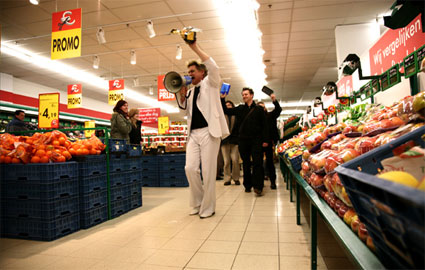
Photo indymedia
On Saturday March 8, i was walking on a cloud telling myself what a lucky person i was to present a FrictiesSalon with the masked and magnificent guys of the Billboard Liberation Front.
Not that it has been a piece of cake. How do you introduce people who should not be introduced? Who have to keep their identity secret in order to be able to keep on doing their own activities? All i could find in the press were stories about the CIA or Mafia like secrecy that surrounds them and implies that “Spouses and friends do not know that the members are in the organization.”
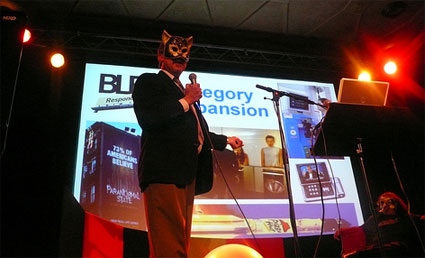
“Improving outdoor advertising since 1977” is the catchphrase of the Billboard Liberation Front. The idea is simple: by making small adjustments to billboards, the BLF creates ironic and often highly critical street marketing campaigns. By changing just a few or sometimes only one letters, they turn upside down the clean and seemingly well-controlled facade of an entire company.
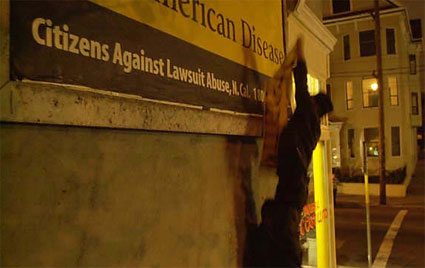
Photo by Gina Gayle for the SF gate
BLF has several sets of presentations. They could have gone for the “terrorist” version but given the theme of the festival, they chose the “corporate” one.
First, we were given a tour of the Fundamentals of the organization, its clients and the opportunities.
They started their actions 30 years ago. At the time, there was no internet, no mobile phone, no blogs, etc. It was also a time when advertisement communication just went one way. Consumers received it and didn’t have anyway to hit back through blogs or forums. There has been dozens of members over the years, some have gone, others have arrived more recently.
Client portfolio
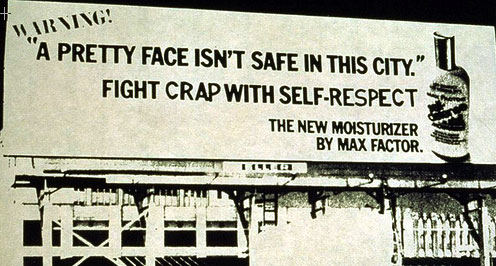
In 77 a “bunch of freaks” in San Francisco called the San Francisco Suicide Club had vowed to live each day like it was the last one. 27 of them (including ten members wearing gorilla suits) were blindfolded and taken up to a roof. They were faced with two Max Factor billboard and some paint. Unfortunately they were a bit drunk, a bit conspicuous because of the gorilla suits and they started arguing about what should be done with the billboard. Some neighbour called the police and SF Suicide Club learned the message the hard way: be prepared, don’t get drunk, don’t wear stupid suits.
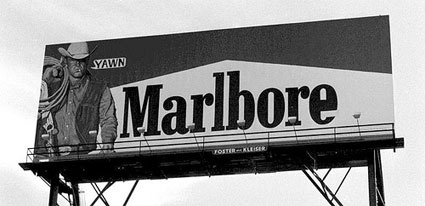
1980. Marlbore instead of Marlboro. It was the first time that the prank was interpreted as a real message from the tobacco company while in fact BLF wanted to comment on the lack of originality of the billboard.
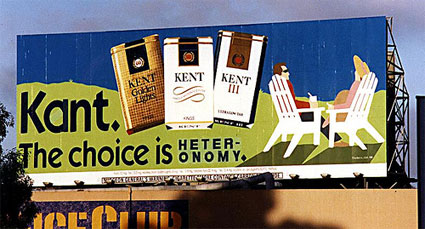
1989. Kant, probably done by a student intern. “Actually it was probably a European intern as no one in the U.S. has ever heard of Kant.”
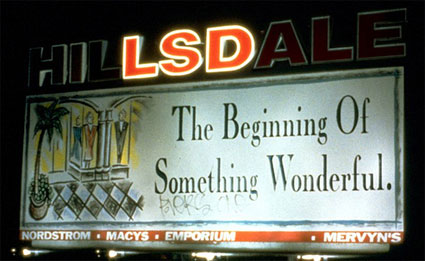
1994. an ad for the the Hillsdale Mall. Very straighforward operation, all they had to do was turn a couple of lights off and just keep the central letters: LSD.
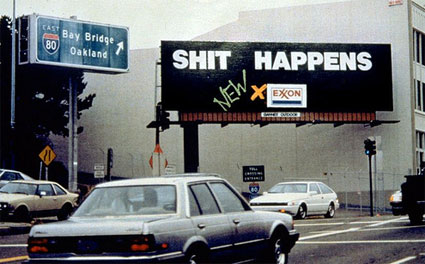
Only a few months after the Exxon Valdez oil spill, one of the most devastating man-made environmental disasters ever to occur at sea which occured in Alaska in 1989, the BLF turned HITS HAPPEN — NEW X-100 into SHIT HAPPENS — NEW EXXON
Then they became more ambitious:
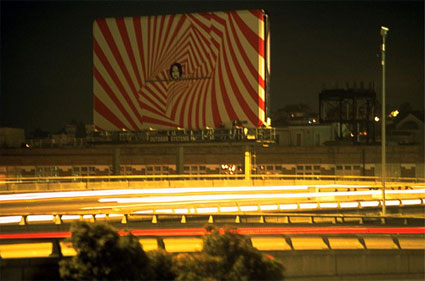
1997. Alteration of a Levi’s billboard overlooking a major highway. BLF issued a press release in which they introduced Charles Manson, a figure who didn’t need any introduction, as the new corporate spokesman of the jeans’ company. This historic collaboration between two of most potent iconic forces of the 1960’s taps into a frothy zeitgeist of manipulative nostalgia.
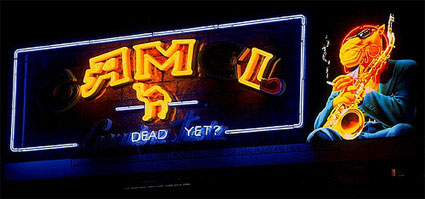
1996. Am I dead yet? Technically more elaborate as they had to sub-contract an electrician and a neon guy.
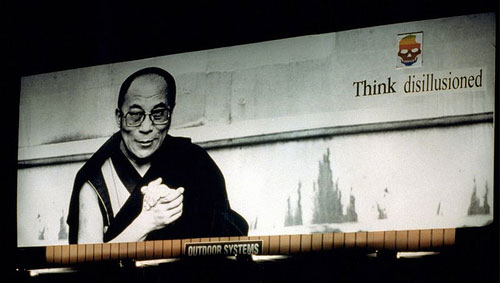
1989. The “Think Different” campaign of Apple became “Think desillusioned”. The company had appropriated the image of famous dead guys or exiled ones like the Dalai Lama. Bulletins are the biggest and the most expensive.
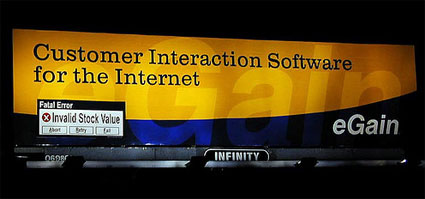
The clients this time were technology companies, with a sector focus on the “dot-coms”. Large-format warning labels were added to the billboards, in the style of a standard computer error message, bearing the bold copy: “FATAL ERROR – Invalid Stock Value Abort/Retry/Fail”.
Ironically the stock market crashed right after this action.
A billboard manipulation can take from a few hours to a few weeks for the most ambitious actions.
Much effort is deployed to make sure that the members of BLF never get arrested. Very few members of BLF climb onto the billboards themselves. Down there on ground level, other members keep an eye on the street, communicating with walkie talkies and checking if they are not getting too much attention from, say, the police. Ground crews posing as drunks, French TV crew, beautiful babes, couples about to engage in a heated argument to divert attention from the billboard in case anything turns wrong.
Even before the improvement action takes place there is a careful preparation. The area surrounding the billboard is mapped, looking for the best ways of quick escape, ideal positions for ground crews, etc.
BLF has to go more and more tech-savvy, just like the industry does. Today you get talking billboards, talks of billboards in space, billboards activated by motion sensors, etc.
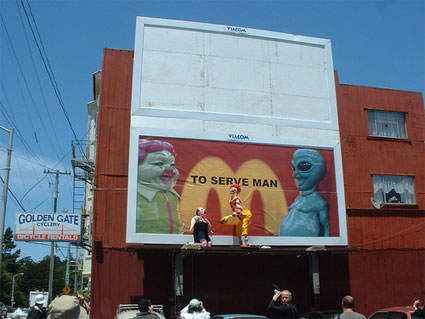
In 2005, they collaborated with artist Ron English for their first animatronic billboard alteration. The background is an original 12′ x 22′ painting by English. At the foreground the animatronic of Ronald McDonald feeding a fat kid his daily dose of Big Macs. The improvement took place in broad day light at a busy cross road in San Francisco while 15 persons where on the ground, dressed up like McDonald and acting crazy.
Some of the key rules of their billboard improvement actions:
– Make alterations that will make people smile not something that will make them angry,
– Less is more. The best improvements are those that require only to alter a single letter to change the whole meaning of the campaign.
– Expose what is hidden. Some advertisers are too shy about what they really mean, BLF will help them make their message clearer. Case in point: the 2005 improvement of Johnny Walker where “Drink responsibly” became “Drink yourself blind”.
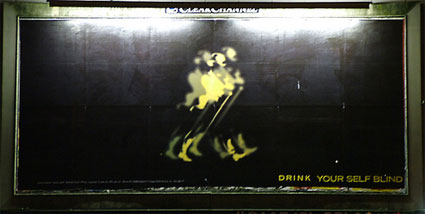
– Send the press some media releases to better disseminate the action. A modified billboard might remain only one hour in the street before it is removed but its traces remain forever online.
– Document your action with some Before and After images.
– A careful planning is essential: Don’t get caught, don’t get hurt. The larger the billboard, the higher you’ll fall.
– Minimize property damage and respect the sign men. BLF make modification which are easy to remove and always leave some beer or liquor for the men who have to come and clean their “improvements.”
– You don’t have to be in San Francisco to make and see billboard improvements. Make yours with the help of BLF’s The Art & Science of Billboard Improvement guide (PDF).
And just like Rev. Billy did in a local shopping center, BLF made their own billboard improvement in the streets of Ghent.
More images of their actions.






